What Are Stockless Anchors
In marine applications, stockless anchors are becoming increasingly common. They are appropriate for a variety of vessels, including tiny boats and huge ships.
Definition of Stockless Anchors
A stockless anchor is a type of marine anchor that lacks a stock, which is a vertical bar that extends from the shank of the anchor and aids in pivoting and setting properly on the seafloor. A stockless anchor’s shank is directly attached to the anchor chain or rope, and its design allows it to rotate and dig into the seafloor without the use of a stock. Because of their small design, convenience of usage, and holding capability in a variety of seabed conditions, stockless anchors are extensively used on ships and boats.
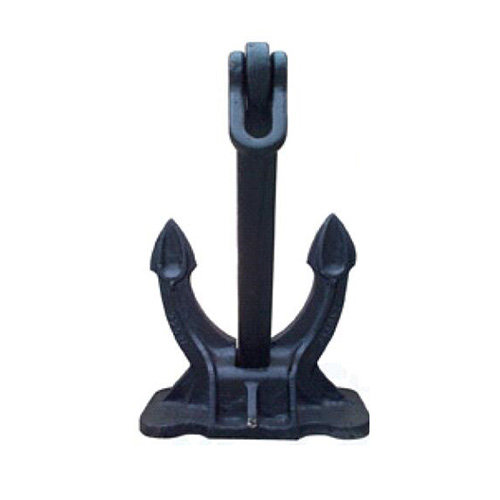
Design and Components Of Stockless Anchors
A stockless anchor’s design and components might vary depending on the manufacturer and intended purpose, but it normally consists of the following parts:
Shank
The shank is the anchor’s primary body, providing the structure and weight required to keep the anchor in place. It features a bent or fluked end that aids in digging into the bottom.
Flukes
The flukes of an anchor are the flat, curved, or pointed sections of the anchor that dig into the seafloor and give gripping power. They are often formed like a scoop or a wing and can vary in number, size, and angle depending on the size and kind of anchor.
Crown
The crown is the top of the anchor and usually has a hole or slot for attaching the anchor chain or rope.
Tripping ring
The tripping ring is a little ring attached to the crown of the anchor that is used in an emergency to remove the anchor from the bottom.
Chain or rope
The chain or rope connects the anchor to the boat and provides the necessary tension to keep the anchor in place. A shackle is frequently used to secure it to the crown of the anchor.
Shank
The shank is the anchor’s primary body, providing the structure and weight required to keep the anchor in place. It features a bent or fluked end that aids in digging into the bottom.
Flukes
The flukes of an anchor are the flat, curved, or pointed sections of the anchor that dig into the seafloor and give gripping power. They are often formed like a scoop or a wing and can vary in number, size, and angle depending on the size and kind of anchor.
Crown
The crown is the top of the anchor and usually has a hole or slot for attaching the anchor chain or rope.
Tripping ring
The tripping ring is a little ring attached to the crown of the anchor that is used in an emergency to remove the anchor from the bottom.
Chain or rope
The chain or rope connects the anchor to the boat and provides the necessary tension to keep the anchor in place. A shackle is frequently used to secure it to the crown of the anchor.
A stockless anchor’s components are designed to work together to give the necessary holding power to keep the boat or ship in place. In comparison to standard anchors with stocks, the lack of a stock in the design enables for easier handling, stowing, and deployment of the anchor.
Various Types of Stockless Anchors
Each type of stockless anchor has distinct characteristics and advantages that make it suited for a variety of marine applications.
AC-14 anchor
The AC-14 anchor is a common form of stockless anchor that is designed to give great dragging resistance and good holding force. It is frequently found on offshore oil rigs and other large marine vessels.
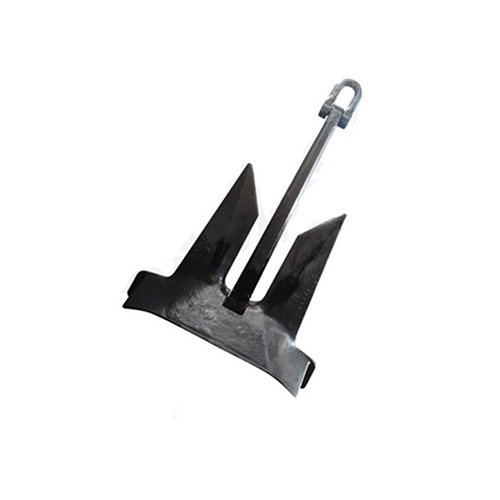
Hall anchor
The Hall anchor is a lightweight and compact anchor that is often used on smaller vessels. It is designed to provide good holding power in soft and moderate seabed conditions.
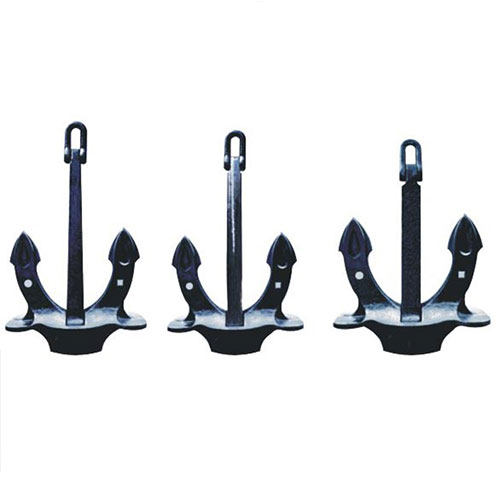
Spek anchor
The Spek anchor is a heavy-duty anchor designed for use in difficult seabed conditions like rocks or rocky seabeds. It is frequently employed on large ships and offshore rigs.
Pool anchor
Pool anchors are adaptable anchors that may be utilized in a variety of bottom conditions such as mud, sand, and rock. It’s most typically seen on small to medium-sized ships.
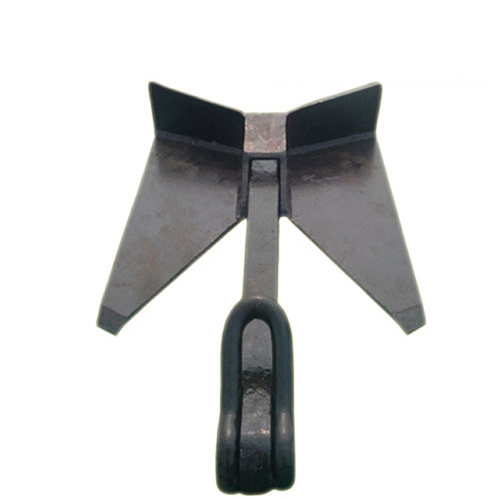
Baldt anchor
The Baldt anchor is a high-strength anchor used in heavy-duty marine applications such as oil rigs and large cargo ships.
Delta anchor
The Delta anchor is a popular stockless anchor with strong holding ability in a variety of seabed situations. It is frequently found on recreational boats and smaller commercial vessels.
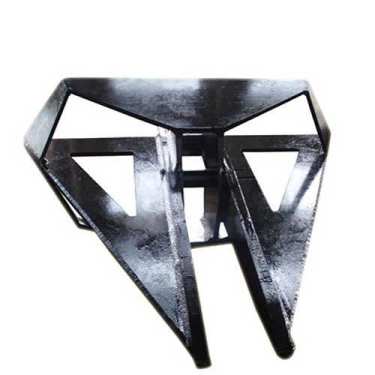
Installation and Maintenance Of Stockless Anchor
Installation and maintenance of a stockless anchor are critical for assuring optimal operation and extending its lifespan. A stockless anchor’s proper installation and maintenance can assist assure its dependability and efficacy in keeping a vessel in place.
Installation
1.Check the chain or rope for any damage, such as fraying, rust, or wear and tear, before installing the anchor. Before installation, any damaged chain or rope should be replaced.
2.The anchor should be suitably designed for the size and weight of the vessel, as well as the seabed conditions where it will be utilized. The manufacturer’s instructions for chain and rope lengths for the anchor should also be followed.
3.When deploying the anchor, it is critical to lower it carefully and gradually while paying out the chain or rope to avoid damaging the anchor and ensuring proper placement in the seabed.
4.Once the anchor is in place, the boat’s location should be examined to ensure it is firmly fastened.
Maintenance
1.Inspect the anchor after each usage for any damage or wear, such as bent flukes or cracks in the shank. Any damage should be rectified or, if necessary, the anchor replaced.
2.The anchor should be cleaned on a regular basis to prevent corrosion and rust development, which can weaken and impair the anchor’s holding capacity.
3.Inspect the chain or rope on a regular basis for deterioration, such as corrosion or fraying, and replace any damaged pieces as soon as possible.
4.It is critical to follow the manufacturer’s instructions for maintenance and inspection intervals, which can vary depending on the material and usage of the anchor.
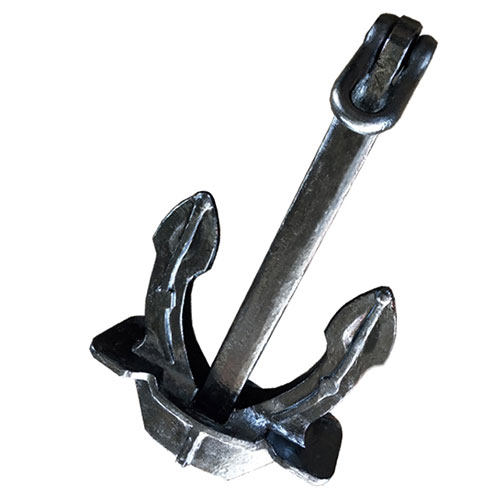
Advantages and Disadvantages of Stockless Anchors
Stockless anchors feature a number of benefits and drawbacks that should be considered when selecting an anchor for a given marine application.
Advantages:
Compact design
Stockless anchors are smaller in size than typical anchors with stocks, making them easier to handle and store. As a result, they can be used on a variety of vessels, including tiny boats and large ships.
Easy to deploy
Stockless anchors are simple to use and enable for quick and efficient anchoring, especially in shallow waters.
Good holding power
Stockless anchors perform well on a wide range of seabed conditions, including sand, mud, and rocks.
Reduced snagging
Stockless anchors have a reduced risk of snagging on underwater debris, which can be a problem with traditional anchors with stocks.
Versatility
Stockless anchors are less likely to snag on undersea detritus, which can be an issue with typical anchors with stocks.
Disadvantages:
Reduced pivot
The absence of a stock in the design of stockless anchors limits their capacity to swivel and orient themselves on the bottom, which can compromise their holding power under certain conditions.
Poor performance in high winds
Stockless anchors may not function as effectively in high winds as typical anchors with stocks because its design does not provide as much surface area for wind to force against.
Limited holding power in hard seabeds
In hard seabeds or rocky areas, stockless anchors may have low holding force, reducing their usefulness.
More frequent maintenance
Stockless anchors may require more frequent maintenance, as their compact design and lack of a stock can make them more susceptible to wear and tear.
Higher cost
When manufactured of high-strength materials, stockless anchors might be more expensive than typical anchors with stocks.
Summary
The use of stockless anchors in marine applications is a viable option for many vessels and conditions. However, it is important to consider the specific requirements of each application, as well as the advantages and disadvantages of stockless anchors, to make an informed decision on the most suitable anchor for the task at hand.

